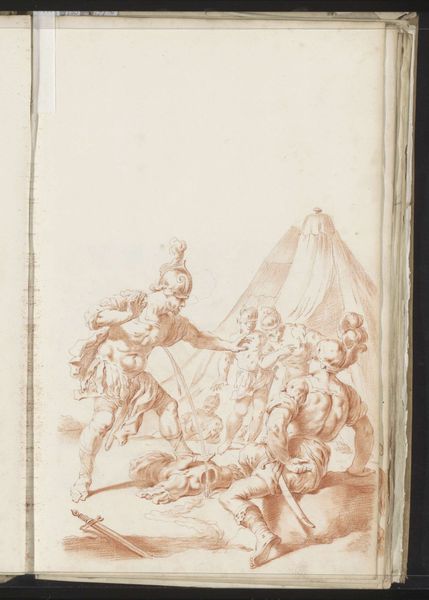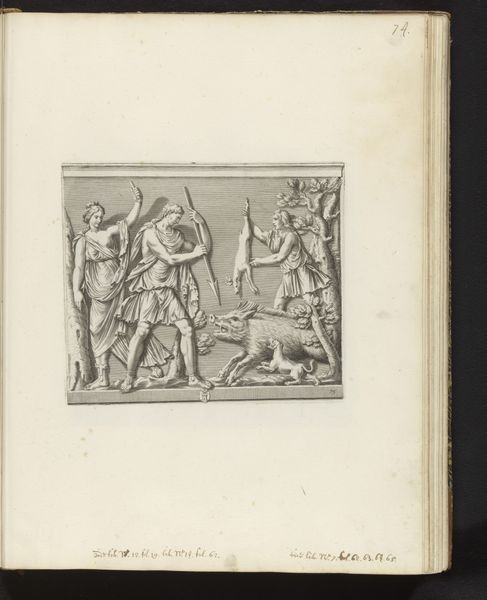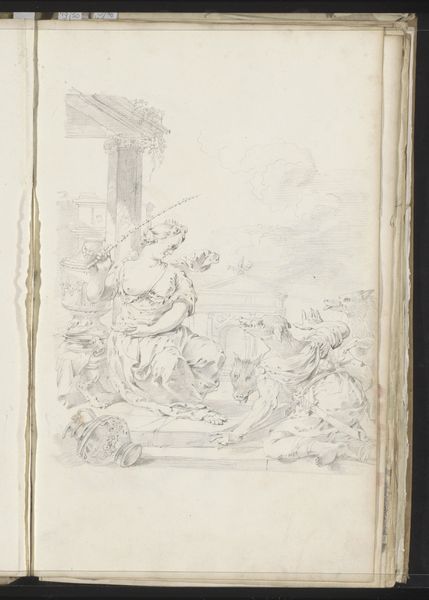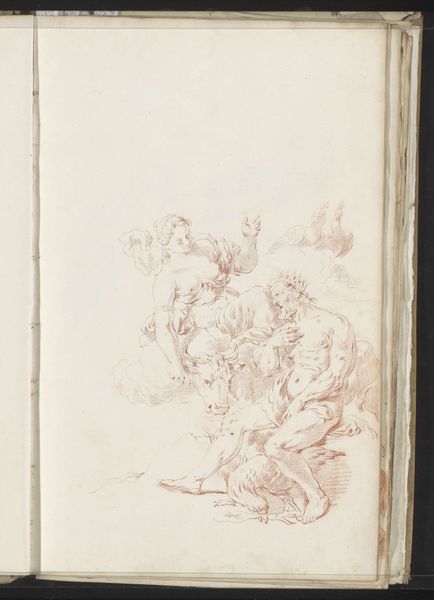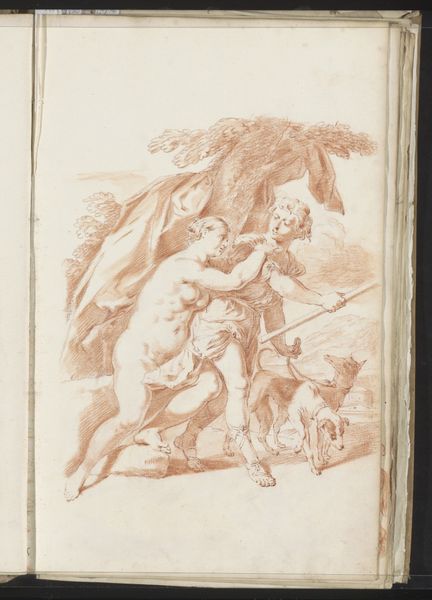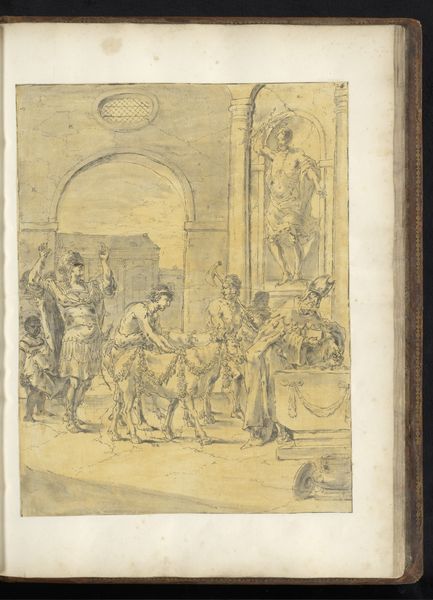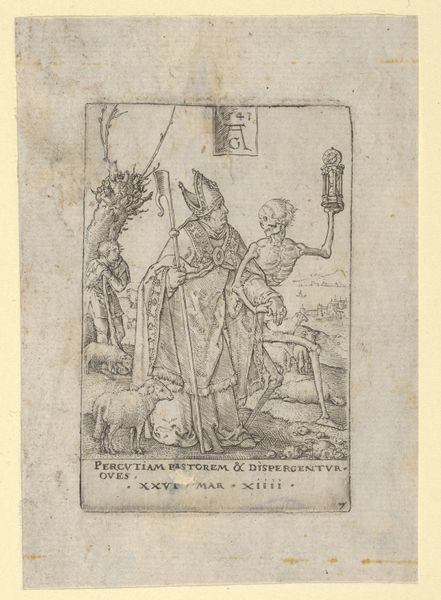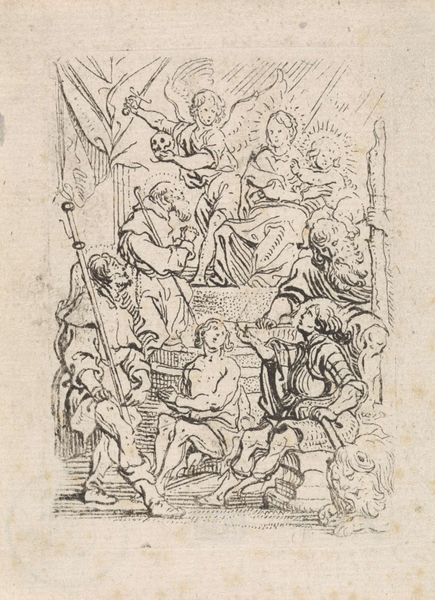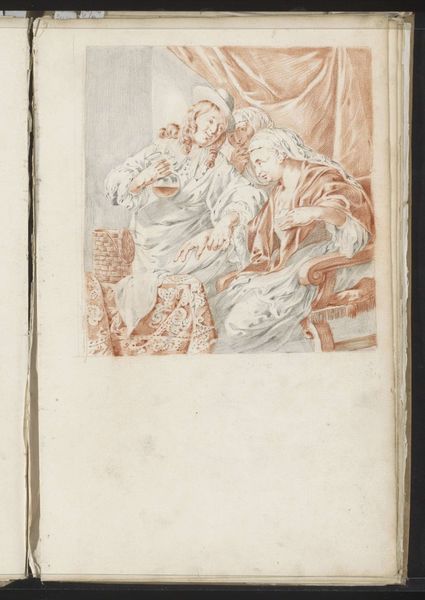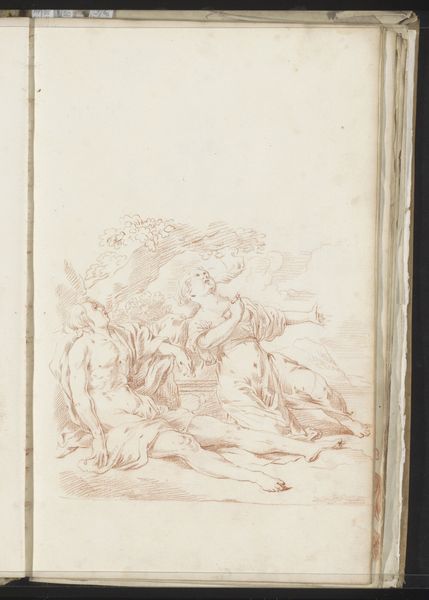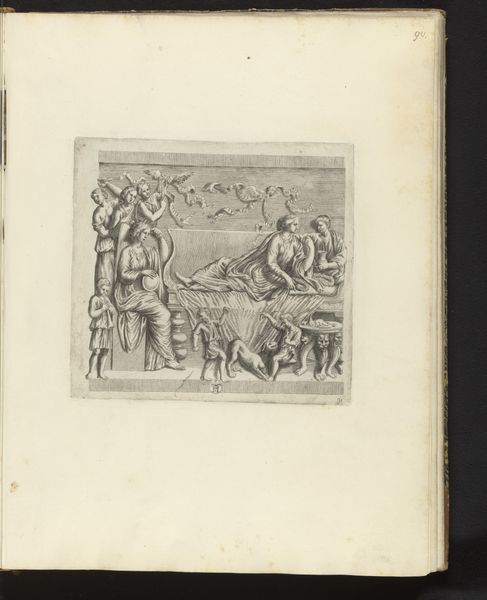
drawing, ink, pen
#
portrait
#
drawing
#
allegory
#
baroque
#
pen sketch
#
figuration
#
ink
#
pen-ink sketch
#
pen
Copyright: Rijks Museum: Open Domain
Curator: This striking ink drawing from 1701 is titled "Pictura," or "Painting," and it’s by the Dutch artist Jacob Toorenvliet. The piece presents an allegory of the art of painting itself. Editor: My immediate impression is one of intricate detail and lightness. Despite being a pen and ink drawing, there’s an ethereal quality to it, almost like a dream. I am particularly drawn to its composition and the symbolism imbued within the allegorical elements. Curator: Indeed. Toorenvliet created this artwork during a time when the Dutch Republic was transitioning into the Enlightenment, and representations of art were common ways for academies to display their influence. Here, he depicts Pictura, the embodiment of painting, hard at work. Editor: That artistic self-awareness is fascinating, especially when we situate it within that moment of societal transition. The almost didactic portrayal makes one think of a particular mission ascribed to art—what are the political dimensions and intellectual debates embedded here? The bust and sculptural figures around her – do you see a clear effort to legitimize a new kind of representation? Curator: Precisely! The inclusion of the bust and sculptures points towards the artist wanting to demonstrate knowledge and appreciation for classical ideals and learning, reflecting the period’s artistic values. Editor: It’s hard not to note the presence of that cherubic figure with what appears to be a memento mori near the lower corner. The allegorical nature is reinforced by such symbols that urge a dialogue of the self in this construction of art. Does this symbol affect the viewing of "Pictura," making one ask more questions? Curator: The presence of that angel serves, in part, to remind the viewer of life's transient nature. Allegories were not merely about art’s virtues, but were tools for societal reflections on morality. The dialogue with the self can become a wider look at culture. Editor: Seeing that the woman holds the brush, one begins to recognize an embodiment of the female gaze as a conduit of painting's role. This further inspires me to situate my perspective and question that kind of historical intersection. I must recognize Toorenvliet’s work beyond the purely visual level. Curator: And beyond a presentation of technique. Looking at this again, I note the skill and vision embedded within Toorenvliet's piece, echoing a drive to give visibility to classical styles in a changing intellectual atmosphere. Editor: Yes, by reflecting on this interplay of visibility, we allow ourselves to recognize, and reflect on art with much more inclusive eyes.
Comments
No comments
Be the first to comment and join the conversation on the ultimate creative platform.
